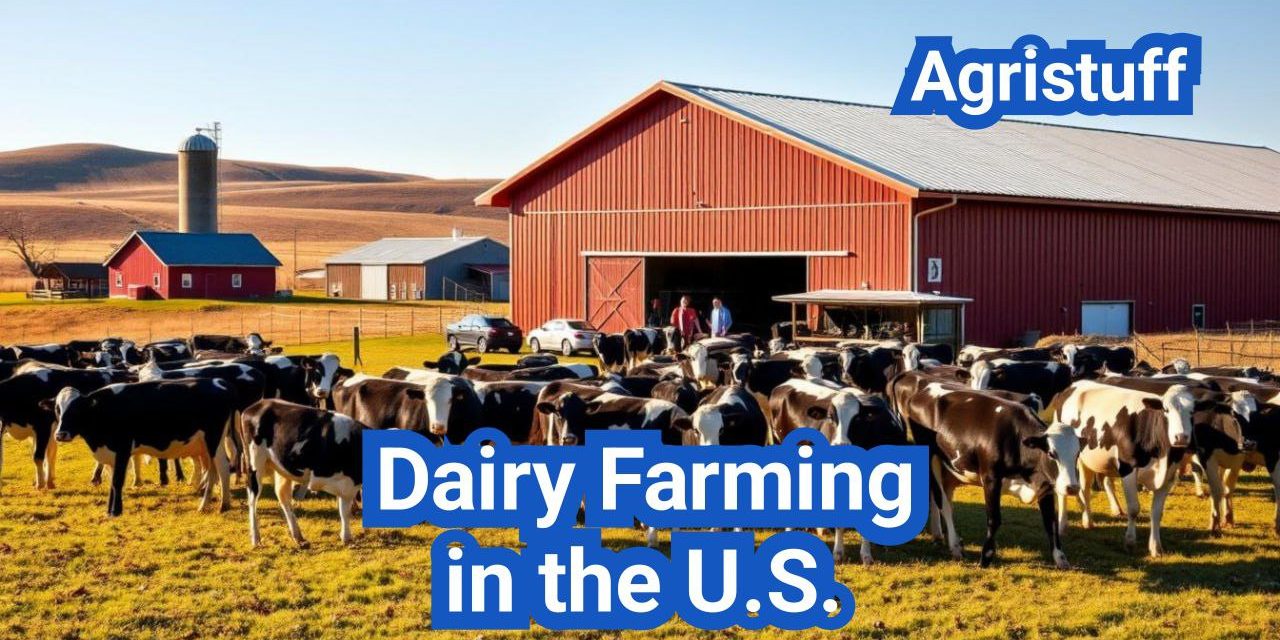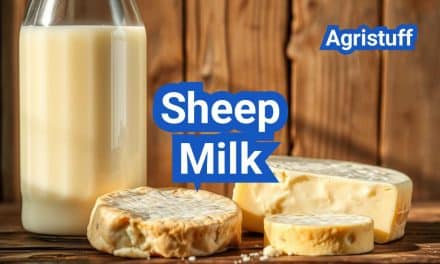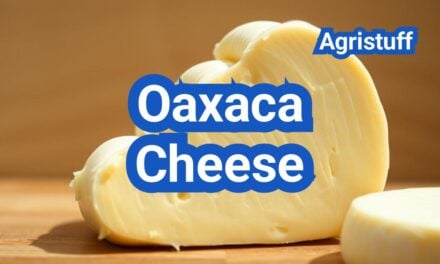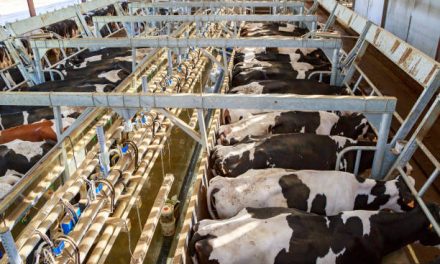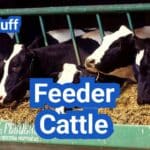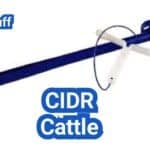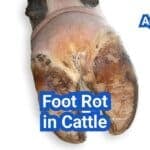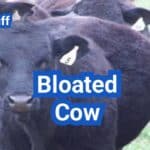The United States is home to a thriving agricultural industry, with dairy farming playing a significant role in the country’s economy.
According to the USDA’s Economic Research Service, the U.S. dairy sector supports the livelihoods of farmers and their communities across various regions. The success of this industry is influenced by several key factors, including the selection of breeds and feeding practices, which directly impact milk yields.
Different breeds are chosen for their productivity and adaptability to different climates and feeding strategies. Effective feeding practices are crucial for maximizing milk production while ensuring the health and welfare of the cattle.
Key Takeaways
- The U.S. dairy industry is a significant contributor to the country’s agricultural economy.
- Breed selection and feeding practices are critical factors in dairy farming success.
- Milk yields are directly impacted by the choice of breed and feeding strategies.
- The dairy sector supports the livelihoods of farmers and their communities.
- Regional variations in climate and resources influence dairy farming practices.
The State of Dairy Farming in the United States
The U.S. dairy farming industry is a cornerstone of the agricultural landscape, impacting local and national economies. As a significant sector within American agriculture, it generates substantial revenue and supports rural communities.
Economic Impact and Industry Overview
The dairy industry is a vital component of the U.S. agricultural economy. In 2019, it generated $40.5 billion in cash receipts, as reported by the USDA’s Economic Research Service. This substantial economic impact underscores the industry’s importance and its role in sustaining rural economies through job creation and related businesses.
Dairy farming’s economic influence extends beyond the farm gate. It supports a wide range of industries, from feed suppliers and equipment manufacturers to processors and distributors. This interconnectedness highlights the industry’s resilience and its capacity to adapt to changing market conditions.
“The dairy industry is not just about milk production; it’s about the people, the land, and the communities it serves.”
Historical Development of American Dairy Farming
Dairy farming in the United States has a rich history that spans centuries. From its early beginnings to the present day, the industry has evolved significantly, influenced by technological advancements, changing consumer preferences, and shifting agricultural practices.
The introduction of new technologies, such as milking machines and refrigeration, revolutionized the industry, enabling larger scale production and longer shelf life for dairy products. These advancements, coupled with improvements in breeding and nutrition, have contributed to the industry’s growth and efficiency.
Current Challenges and Opportunities
Despite its successes, the dairy farming industry faces several challenges, including fluctuating milk prices, increasing production costs, and environmental concerns. Climate change and its impact on feed crops and water availability pose significant long-term challenges.
However, these challenges also present opportunities for innovation and sustainability. The industry is exploring new technologies and practices, such as anaerobic digesters and precision agriculture, to reduce its environmental footprint and enhance its resilience.
By embracing these opportunities, the U.S. dairy farming industry can continue to thrive, contributing to the nation’s agricultural economy while meeting the evolving needs of consumers.
Understanding Dairy Farming: Basic Concepts and Terminology

At its core, dairy farming is about managing dairy cows to produce high-quality milk. Dairy farming involves a range of practices and techniques aimed at optimizing milk production while ensuring the health and well-being of the dairy herd. This agricultural enterprise is distinct from others due to its focus on milk production.
Defining Dairy Farming
Dairy farming is the practice of raising dairy cows for milk production, which is then processed into various dairy products such as cheese, butter, and yogurt. The dairy farming industry is a significant sector in agriculture, providing essential products for human nutrition. Effective dairy farming requires a deep understanding of cow management, nutrition, and milking practices.
Key Components of a Dairy Operation
A dairy operation consists of several key components, including cow management, feeding practices, milking routines, and manure management. Cow management involves breeding, health care, and welfare of the dairy herd. Feeding practices are critical for optimizing milk production and include the formulation of diets that meet the nutritional needs of dairy cows.
- Cow management: Breeding, health care, and welfare
- Feeding practices: Nutrition and diet formulation
- Milking routines: Milking frequency and hygiene practices
- Manure management: Handling and disposal of waste
Differences from Other Agricultural Enterprises
Dairy farming differs from other agricultural enterprises in its focus on milk production. Unlike crop farming, which involves the cultivation of crops for grain or forage, dairy farming is centered on the management of dairy cows. Additionally, dairy farming requires daily milking and care for the cows, making it a labor-intensive operation.
The distinction between dairy farming and other types of farming lies in its unique combination of animal husbandry and milk production. Dairy farmers must balance the needs of their dairy herd with the demands of milk production, making it a challenging yet rewarding agricultural pursuit.
Top Milk Producing States in the USA
When it comes to milk production, the U.S. has several standout states that lead the way in the dairy industry. These states have become the backbone of America’s dairy sector, leveraging their unique resources and advanced farming practices to produce high-quality milk.
California: The Leading Dairy State
California stands out as the top dairy-producing state in the country. The state’s dry climate, coupled with its advanced irrigation systems, allows for efficient dairy farming operations. California’s dairy farms are known for their large herd sizes and high milk production per cow, making it a leader in the national dairy industry.
Wisconsin: America’s Dairyland
Wisconsin is renowned for its dairy farming heritage, earning the nickname “America’s Dairyland.” The state’s rich agricultural land, coupled with its favorable climate for forage production, supports a thriving dairy industry. Wisconsin dairy farms are known for their high-quality milk and dairy products, contributing significantly to the state’s agricultural economy.
Other Major Dairy Producing Regions
While California and Wisconsin lead the nation in milk production, other states also play crucial roles in the dairy industry. Idaho, New York, and Texas are among the top dairy-producing states, each with their unique advantages. Idaho’s dry climate and extensive irrigation systems make it an ideal location for large-scale dairy operations. New York’s dairy farms benefit from its rich agricultural heritage and proximity to major markets. Texas, with its vast ranchlands, has seen significant growth in its dairy industry in recent years.
The success of these top milk-producing states can be attributed to a combination of factors, including favorable climate conditions, advanced dairy farming practices, and significant dairy cow populations. As the demand for dairy products continues to evolve, these states are poised to remain at the forefront of the U.S. dairy industry.
Major Dairy Cow Breeds in American Farming

Several dairy cow breeds are pivotal to the success of the dairy industry in the United States, each with unique characteristics. The selection of breed can significantly impact milk production, farm profitability, and the overall sustainability of dairy operations.
Holstein: The Black and White Milk Producers
The Holstein breed is the most common dairy breed in the U.S., known for its high milk production. Holsteins are recognized for their black and white coats and are capable of producing large quantities of milk, making them a favorite among dairy farmers.
“Holsteins are the backbone of the American dairy industry, providing the majority of the milk consumed across the country,” according to dairy farming experts.
Jersey: Butterfat Champions
Jersey cows are another popular breed, celebrated for their rich milk with high butterfat content. This makes their milk particularly suitable for cheese and butter production, commanding a premium price in many markets.
Brown Swiss: Cheese Milk Specialists
The Brown Swiss breed is known for its robust constitution and longevity, making it an attractive choice for dairy farmers. Their milk is rich in protein and is often used in cheese production, benefiting from the breed’s genetic predisposition to high-quality milk.
Guernsey: Beta-Carotene Rich Milk Producers
Guernsey cows are prized for their milk’s high beta-carotene content, which gives it a distinct golden color. Guernsey milk is not only rich in nutrients but also has a unique characteristic that appeals to consumers looking for high-quality dairy products.
The diversity in dairy cow breeds allows American dairy farmers to cater to a wide range of market demands, from high-volume milk production to specialty dairy products. Understanding the strengths of each breed is crucial for making informed decisions about dairy operations.
Selecting the Best Cows for Milk Production
Breed selection is a critical decision for dairy farmers aiming to optimize milk yields and overall farm efficiency. The choice of dairy cow breed significantly impacts milk production levels, farm profitability, and the overall success of the dairy farming operation.
Breed Selection Based on Farm Goals
When selecting dairy cow breeds, farmers must consider their specific farm goals, such as milk production volume, milk composition, and profitability. Different breeds excel in various areas, making it essential to align breed characteristics with farm objectives.
For instance, Holstein cows are renowned for their high milk production, while Jersey cows are prized for their rich milk fat content. Understanding these breed-specific traits helps farmers make informed decisions that align with their production goals.
Net Merit (NM$) and Economic Selection Indices
Net Merit (NM$) is a crucial economic selection index used in dairy farming to predict a cow’s profitability. It combines various traits, including milk production, fertility, and longevity, to provide a comprehensive measure of a cow’s economic value.
Farmers can use NM$ to make data-driven decisions when selecting cows, thereby optimizing their herd’s overall profitability. By focusing on cows with high NM$ values, dairy farmers can improve their farm’s economic performance.
| Trait | Weightage in NM$ | Importance |
|---|---|---|
| Milk Production | 45% | High |
| Fertility | 20% | Medium |
| Longevity | 15% | High |
Genomic Selection in Modern Dairy Farming
Genomic selection has revolutionized dairy farming by enabling farmers to make more accurate breeding decisions. This technology involves analyzing a cow’s DNA to predict its genetic merit for various traits, including milk production and disease resistance.
By leveraging genomic selection, dairy farmers can identify superior genetics early in a cow’s life, leading to faster genetic progress and improved herd performance over time.
Age at First Calving Considerations
The age at which a heifer first calves significantly impacts her future productivity and the overall profitability of the dairy operation. Optimal age at first calving balances the need for early production with the cow’s overall health and longevity.
Research suggests that calving between 22 and 24 months of age is often ideal, as it allows for a balance between early milk production and the cow’s physical maturity. Farmers should consider this factor when managing their heifer rearing programs.
By carefully considering breed selection, Net Merit, genomic selection, and age at first calving, dairy farmers can optimize their milk production and improve the overall efficiency of their dairy farming operations.
Nutrition and Feeding Practices in Dairy Farming
The nutritional needs of dairy cows are multifaceted, involving a delicate balance of nutrients for optimal milk production. A well-balanced diet is crucial for maintaining the health and productivity of dairy cows, directly impacting the quality and quantity of milk produced.
Total Mixed Ration (TMR) Systems
Total Mixed Ration (TMR) systems have revolutionized dairy farming by providing a consistent and balanced diet to cows. TMR involves mixing all the dietary components into a single ration, ensuring that each cow receives the necessary nutrients for optimal production.
“TMR systems allow for precise formulation of diets, which can lead to improved milk production and reduced feed waste,” according to dairy nutrition experts. This approach enables dairy farmers to tailor the nutritional content to the specific needs of their herd.
Forage Components: Corn Silage and Alfalfa Haylage
Forage components, such as corn silage and alfalfa haylage, are critical elements of a dairy cow’s diet. Corn silage provides energy, while alfalfa haylage is rich in protein and fiber, contributing to the overall nutritional balance.
The quality of forage components significantly impacts the nutritional value of the TMR. For instance, high-quality corn silage can enhance milk production, while alfalfa haylage supports the overall health of the cow.
NASEM Dairy Requirements and Balanced Nutrition
The National Academies of Sciences, Engineering, and Medicine (NASEM) provide guidelines for dairy cow nutrition, outlining the requirements for various nutrients. Following these guidelines helps ensure that dairy cows receive a balanced diet, supporting their health and productivity.
Balanced nutrition is key to maximizing milk production while maintaining cow health. Dairy farmers must carefully formulate diets that meet the NASEM requirements, adjusting for factors such as age, production level, and stage of lactation.
Feed Management for Different Production Stages
Dairy cows have different nutritional needs at various stages of their lactation cycle. Feed management strategies must be adapted to meet these changing needs, ensuring optimal production and health.
For example, during early lactation, cows require a diet rich in energy and protein to support milk production. As they progress through their lactation cycle, their nutritional needs change, requiring adjustments to their feed.
Effective feed management involves not only formulating the right diet but also ensuring that feeding practices are efficient and minimize waste. This includes regular monitoring of cow health and production levels, as well as adjustments to the TMR as needed.
Milk Production Management and Optimization

Milk production management involves a range of strategies to optimize yields and cow well-being. Effective management practices are crucial for maximizing milk production while maintaining the health and productivity of dairy cows.
Milking Frequency and Techniques
Milking frequency and techniques significantly impact milk production and quality. Research has shown that more frequent milking can increase milk yields, but it also increases labor costs and may affect cow comfort (Dairy Farming FAQ). Modern dairy farms often employ advanced milking technologies, such as robotic milking systems, to optimize milking frequency and techniques.
“The key to successful milking is not just the frequency, but also the technique and the comfort of the cow during the milking process,” says a leading dairy farming expert.
Voluntary Waiting Period Management
The voluntary waiting period (VWP) is a critical factor in milk production management. It refers to the period after calving during which cows are not bred. Managing the VWP effectively can improve reproductive efficiency and milk production. A well-managed VWP allows dairy farmers to optimize the lactation cycle and improve overall herd productivity.
- Monitor cow health and reproductive status closely during the VWP.
- Adjust nutrition and management practices to support reproductive health.
- Use advanced reproductive technologies to optimize breeding during the VWP.
Lactation Cycles and Persistence
Understanding lactation cycles and persistence is essential for optimizing milk production. Lactation persistence refers to the ability of a cow to maintain milk production over time. Factors such as genetics, nutrition, and management practices influence lactation persistence. Dairy farmers can use strategies like nutritional adjustments and milking management to enhance lactation persistence and overall milk production.
| Lactation Stage | Milk Production | Management Focus |
|---|---|---|
| Early Lactation | Peak milk production | Nutritional support |
| Mid-Lactation | Stable milk production | Reproductive management |
| Late Lactation | Declining milk production | Dry cow management |
Seasonal Considerations in Milk Production
Seasonal variations can significantly impact milk production. Factors such as temperature, humidity, and feed availability change with the seasons, affecting cow comfort and milk yields. Dairy farmers must adapt their management practices to these seasonal changes to maintain optimal milk production. Strategies include adjusting nutrition, providing cooling measures during hot weather, and managing cow housing to ensure comfort throughout the year.
By understanding and addressing these seasonal considerations, dairy farmers can optimize milk production and maintain the well-being of their dairy cows.
Milk Quality Standards and Testing

High-quality milk is the backbone of the dairy industry, necessitating stringent quality control measures. Ensuring the quality of milk is crucial not only for consumer health but also for the economic viability of dairy farming operations.
Somatic Cell Count (SCC) and Milk Quality
The Somatic Cell Count is a critical indicator of milk quality. It measures the number of somatic cells present in milk, which can indicate the health status of the cow. High SCC levels can result in penalties for dairy farmers and impact the overall quality of milk.
A low SCC is associated with high-quality milk and healthy cows. Dairy farmers monitor SCC closely as part of their milk quality management strategy.
Pasteurized Milk Ordinance (PMO) Standards
The Pasteurized Milk Ordinance sets the standards for milk quality in the United States. It outlines the requirements for Grade A milk production, including milking practices, equipment sanitation, and testing protocols.
Compliance with PMO standards is essential for dairy farmers who wish to sell their milk as Grade A. Regular inspections and testing ensure that dairy farms meet these stringent standards.
Antibiotic Residue Testing in Milk
Antibiotic residue testing is a critical component of milk quality control. The presence of antibiotics in milk can have serious health implications for consumers and disrupt the cheese-making process.
Dairy farmers must adhere to strict withdrawal periods for antibiotics and participate in regular testing programs to ensure their milk is free from antibiotic residues.
Quality Premiums and Penalties
Dairy farmers receive quality premiums for producing high-quality milk that meets or exceeds the standards set by milk buyers. Conversely, they may face penalties for milk that fails to meet these standards.
The quality premiums and penalties system incentivizes dairy farmers to maintain high standards of milk quality, ultimately benefiting consumers and the dairy industry as a whole.
Starting a Dairy Farming Business

Embarking on a dairy farming venture involves careful planning, significant investment, and compliance with regulations. Aspiring dairy farmers must consider several critical factors to ensure the success of their business.
Developing a Comprehensive Dairy Farm Business Plan
A comprehensive business plan is the foundation of a successful dairy farming operation. It should outline the farm’s goals, production strategies, marketing plans, and financial projections. The plan must also consider the farm’s location, size, and the number of cows to be managed. A well-crafted business plan helps in securing financing and guides the farm’s operations in its early stages.
Key components of a dairy farm business plan include:
- Executive summary
- Market analysis
- Production plan
- Marketing strategy
- Financial projections
- Management and organization
Capital Requirements and Financing Options
Starting a dairy farm requires substantial capital investment. The costs include purchasing or leasing land, constructing or renovating facilities, buying equipment, and acquiring cattle. Dairy farmers can explore various financing options, such as loans from agricultural banks, government programs, and private investors. It’s essential to create a detailed financial plan that outlines the capital requirements and potential returns on investment.
Land and Facility Considerations
The selection of suitable land and the design of facilities are crucial for the success of a dairy farm. The land should be fertile, well-drained, and accessible. Facilities such as milking parlors, barns, and manure storage systems must be designed to meet the needs of the cattle and comply with environmental regulations. Efficient facility layout can improve labor productivity and reduce operational costs.
Regulatory Compliance and Licensing
Dairy farming is a heavily regulated industry. Farmers must comply with local, state, and federal regulations regarding environmental protection, animal welfare, and food safety. Obtaining necessary licenses and permits is critical before commencing operations. Regular inspections and adherence to standards such as the Pasteurized Milk Ordinance (PMO) are mandatory to maintain the quality and safety of milk production.
Regulatory compliance involves:
- Obtaining necessary permits and licenses
- Adhering to environmental regulations
- Maintaining animal health and welfare standards
- Complying with food safety guidelines
By carefully planning and managing these aspects, new dairy farmers can establish a solid foundation for their business and navigate the challenges of the industry effectively.
Large-Scale Dairy Operations

The trend towards larger dairy operations is transforming the agricultural landscape. As dairy farms expand, they face unique challenges and opportunities that impact their efficiency and profitability.
Characteristics of the Largest Dairy Farms in the World
The largest dairy farms globally are characterized by their massive scale, often milking thousands of cows. These operations typically adopt advanced technology, including automated milking systems and precision agriculture techniques, to manage their herds efficiently. For instance, some large dairy farms in the United States have adopted robotic milking systems that allow for more frequent milking and reduced labor costs.
These large-scale operations also focus on optimizing cow nutrition and health, using data analytics to monitor and improve milk production. The use of Total Mixed Ration (TMR) systems ensures that cows receive a balanced diet, enhancing milk yield and quality.
Economies of Scale in Dairy Production
Large dairy operations benefit significantly from economies of scale. By producing milk on a massive scale, these farms can reduce their cost per unit, making them more competitive in the market. Economies of scale are achieved through various means, including bulk purchasing of feed and supplies, efficient use of equipment, and streamlined labor management.
Moreover, large dairy farms can invest in advanced technology and infrastructure, such as anaerobic digesters, which can generate renewable energy and reduce waste. This not only improves their bottom line but also contributes to sustainability.
Management Challenges of Large Dairy Operations
Despite the benefits, managing a large dairy operation comes with its challenges. One of the primary concerns is maintaining cow health and welfare across a large herd. Disease management and ensuring the nutritional needs of thousands of cows are met require sophisticated systems and experienced personnel.
Another significant challenge is environmental management. Large dairy farms generate substantial amounts of manure, which must be managed properly to prevent environmental pollution. Implementing effective manure management systems is crucial for the sustainability of these operations.
Case Studies of Successful Large Dairy Farms
Several large dairy farms around the world serve as models for successful large-scale dairy operations. For example, some farms in California have implemented cutting-edge technology to manage their herds and improve milk production. These case studies demonstrate the importance of adapting to changing market conditions, investing in technology, and focusing on sustainability.
By examining these successful operations, other dairy farmers can gain insights into best practices for large-scale dairy farming, including strategies for improving efficiency, reducing environmental impact, and maintaining profitability.
Sustainable Practices in Dairy Farming

Embracing sustainability in dairy farming is essential for balancing productivity with environmental stewardship. As the dairy industry faces growing scrutiny over its environmental impact, adopting sustainable practices has become a critical component of modern dairy farming.
Methane Reduction Strategies
Dairy farming is a significant source of methane, a potent greenhouse gas. Reducing methane emissions is crucial for mitigating the industry’s environmental footprint. Strategies for methane reduction include improving feed efficiency, managing manure effectively, and implementing technologies that capture methane emissions.
Feed management plays a critical role in reducing methane emissions. By optimizing the nutritional content of feed, dairy farmers can decrease the amount of methane produced by cows during digestion. This not only helps in reducing the environmental impact but also improves the overall health and productivity of the herd.
Anaerobic Digesters and Energy Production
Anaerobic digesters are a key technology in sustainable dairy farming, converting manure into renewable energy while reducing greenhouse gas emissions. These systems capture methane from manure and use it to produce electricity or heat, providing a clean energy source and decreasing reliance on fossil fuels.
The use of anaerobic digesters also produces a nutrient-rich byproduct that can be used as fertilizer, enhancing soil health and reducing the need for synthetic fertilizers. This approach not only contributes to energy production but also supports sustainable land management practices.
Water Conservation Techniques
Water conservation is another vital aspect of sustainable dairy farming. Implementing efficient irrigation systems, improving water management practices, and protecting water quality are essential for reducing the industry’s water footprint. Techniques such as rainwater harvesting and the use of drought-resistant crops can significantly reduce water usage.
Dairy farmers can also adopt precision agriculture techniques to optimize water use. By using data and technology to monitor soil moisture levels and crop water requirements, farmers can ensure that water is used efficiently, minimizing waste and reducing the environmental impact.
Sustainable Land Management Practices
Sustainable land management is critical for maintaining the long-term productivity and environmental health of dairy farms. Practices such as crop rotation, cover cropping, and conservation tillage help to improve soil health, reduce erosion, and promote biodiversity.
| Practice | Benefits |
|---|---|
| Crop Rotation | Improves soil fertility, reduces pests and diseases |
| Cover Cropping | Reduces soil erosion, enhances biodiversity |
| Conservation Tillage | Minimizes soil disturbance, promotes soil health |
By adopting these sustainable practices, dairy farmers can not only reduce their environmental footprint but also improve the resilience and productivity of their operations. As the dairy industry continues to evolve, the integration of sustainable practices will be crucial for its long-term viability.
Alternative Dairy Farming Approaches

Dairy farmers are exploring alternative approaches to improve sustainability and meet the evolving demands of consumers. These alternative methods offer various benefits, including enhanced animal welfare, reduced environmental impact, and new market opportunities.
Organic Dairy Production Methods
Organic dairy farming is a significant alternative approach that focuses on producing milk without synthetic fertilizers, pesticides, or genetically modified organisms (GMOs). Organic dairy farms must adhere to strict guidelines, including providing cows with organic feed and access to pasture. This approach not only results in organic milk and dairy products but also contributes to soil health, biodiversity, and efficient water use.
Key aspects of organic dairy farming include:
- Organic feed for cattle
- Access to pasture for cows
- No use of synthetic fertilizers or pesticides
- Prohibition on GMOs
Pasture-Based and Grazing Systems
Pasture-based dairy farming involves keeping cows on pasture for a significant portion of the year. This approach can improve cow welfare, reduce feed costs, and enhance the nutritional profile of milk. Grazing systems require careful management to ensure optimal pasture utilization and cow health.
- Improved animal welfare
- Reduced feed costs
- Enhanced milk nutritional profile
A2 Milk Production
A2 milk production is an emerging alternative dairy farming approach that focuses on producing milk with only the A2 type of beta-casein protein. Research suggests that A2 milk may be easier to digest for some consumers compared to conventional milk, which contains both A1 and A2 beta-casein proteins.
Dairy farmers can adopt A2 milk production by:
- Selecting breeds that naturally produce A2 milk, such as Guernsey or Jersey cows
- Genetic testing of their herds to identify A2-producing animals
Raw Milk Farming and Regulations
Raw milk farming involves producing and selling milk that has not been pasteurized. This approach is subject to strict regulations to ensure consumer safety. Raw milk dairy farmers must adhere to specific guidelines regarding cow health, milking practices, and distribution.
Regulations for raw milk production vary by state but typically include:
- Regular testing for pathogens
- Sanitation and hygiene standards
- Labeling requirements
Raising Goats for Milk: A Dairy Alternative

Goat milk production is gaining traction as a viable alternative to cow dairy farming. With the increasing demand for diverse dairy products, farmers are exploring the potential of goat dairy farming.
Goat Dairy Breeds and Selection
Selecting the right breed is crucial for successful goat dairy farming. Popular breeds include the Nubian, known for its rich milk, and the LaMancha, recognized for its high milk production.
Other notable breeds are the Saanen and Toggenburg, both valued for their milk production capabilities. The choice of breed depends on factors like climate, available resources, and market demand.
| Breed | Milk Production (avg. lbs/year) | Butterfat Content (%) |
|---|---|---|
| Nubian | 1,100 | 5.0 |
| LaMancha | 1,200 | 3.8 |
| Saanen | 1,300 | 3.5 |
| Toggenburg | 1,100 | 3.2 |
Goat Milk Production Practices
Effective goat milk production involves proper nutrition, milking practices, and health management. Goats require a balanced diet that includes high-quality forage and appropriate concentrates.
Milking hygiene is critical to produce high-quality milk. This includes regular cleaning and sanitizing of milking equipment and proper hand milking techniques.
Marketing Goat Milk Products
The market for goat milk products is diverse, ranging from fluid milk to cheese, yogurt, and soap. Identifying the right market channels is crucial for profitability.
Direct-to-consumer sales through farmers’ markets or online platforms can be particularly lucrative. Additionally, partnering with local businesses to supply goat milk products can expand market reach.
Regulatory Considerations for Goat Dairies
Goat dairies must comply with local and state regulations regarding milk production and processing. This includes obtaining necessary licenses and adhering to health and safety standards.
Regular inspections and maintaining detailed records are essential for compliance and for building a reputation for quality and reliability.
Technology and Innovation in Modern Dairy Farming
Technological innovations are revolutionizing the dairy farming sector, enhancing efficiency and productivity. The integration of advanced technologies is transforming traditional dairy farming practices, making them more sustainable and profitable.
Robotic Milking Systems
One of the most significant advancements in dairy technology is the adoption of robotic milking systems. These systems allow for automated milking, reducing labor costs and improving milk quality. Robotic milking machines can milk cows multiple times a day, increasing overall milk production and enhancing cow welfare by reducing stress associated with traditional milking schedules.
The implementation of robotic milking systems also provides farmers with detailed data on individual cow performance, enabling more precise management decisions. This technology is particularly beneficial for large dairy operations, where managing cow health and productivity is crucial.
Precision Dairy Monitoring
Precision dairy monitoring involves the use of various sensors and monitoring systems to track cow health, behavior, and productivity in real-time. This technology includes wearable sensors that monitor cow activity, rumination, and health indicators, allowing farmers to identify potential issues before they become serious problems.
By leveraging precision dairy monitoring, farmers can optimize feeding strategies, detect early signs of illness, and improve overall herd management. This not only enhances milk production but also contributes to better animal welfare and reduced veterinary costs.
Data Management and Analytics
Effective data management is critical in modern dairy farming. Advanced software solutions enable farmers to collect, analyze, and interpret vast amounts of data related to cow health, milk production, and farm operations. This data-driven approach helps in making informed decisions, optimizing resource allocation, and improving farm profitability.
Data analytics tools can identify trends and patterns that may not be apparent through traditional observation. By applying these insights, dairy farmers can refine their breeding programs, nutritional strategies, and milking practices, leading to more efficient and productive operations.
Emerging Technologies in the Dairy Industry
The dairy industry is on the cusp of further technological advancements, with emerging technologies such as artificial intelligence (AI), blockchain, and the Internet of Things (IoT) poised to make significant impacts. AI can be used to predict cow health issues and optimize milking schedules, while blockchain technology can enhance supply chain transparency and traceability.
IoT devices can connect various aspects of dairy farming, from milking equipment to feeding systems, creating a more integrated and efficient farm management system. As these technologies continue to evolve, they are likely to drive further improvements in dairy farming practices, contributing to a more sustainable and productive industry.
Generational Dairy Farming: Family Traditions and Knowledge Transfer
As the dairy farming landscape evolves, the importance of generational farming and knowledge transfer cannot be overstated. Multi-generational dairy farms are a testament to the enduring legacy of family farming traditions. These farms not only preserve historical practices but also embrace modern technologies and innovations.
Profiles of Multi-Generational Dairy Farms
Many dairy farms in the United States have been family-owned and operated for generations. For instance, some farms in Wisconsin have been in the same family for over a century, passing down knowledge and traditions from one generation to the next. These farms often become landmarks in their communities, known for their commitment to quality and sustainability.
The success of multi-generational dairy farms can be attributed to their ability to balance tradition with innovation. They have mastered the art of preserving family traditions while adopting new technologies and practices that enhance efficiency and productivity.
Challenges in Farm Succession Planning
One of the significant challenges faced by multi-generational dairy farms is succession planning. Ensuring a smooth transition from one generation to the next requires careful planning, including financial planning, training the next generation, and sometimes, restructuring the farm’s operations to meet modern demands.
Effective succession planning involves not just the transfer of assets but also the transfer of knowledge and values. It’s about ensuring that the younger generation is equipped with the skills and understanding needed to continue the family’s farming legacy.
Preserving Traditional Knowledge While Embracing Innovation
Dairy farms that have been around for generations have a wealth of traditional knowledge that is invaluable. However, they also recognize the importance of embracing innovation to stay competitive. This involves adopting new technologies, such as precision dairy farming, and innovative practices that improve milk quality and farm sustainability.
The key to successful generational dairy farming is finding a balance between preserving the past and embracing the future. By doing so, these farms can continue to thrive and contribute to the agricultural heritage of the United States.
The Future of Dairy Farming in America
The American dairy industry is poised for continued growth, driven by increasing demand for dairy products. According to the USDA’s Economic Research Service, this trend is expected to shape the future of dairy farming in the U.S.
Dairy farming trends indicate a shift towards more sustainable and technologically advanced practices. The adoption of robotic milking systems, precision dairy monitoring, and data management analytics are transforming the industry. These innovations are likely to play a crucial role in shaping the future of dairy farming.
The future of dairy farming will also be influenced by the industry’s ability to address challenges such as environmental concerns, regulatory compliance, and market fluctuations. As the industry continues to evolve, it is likely that we will see a greater emphasis on sustainable practices and alternative dairy farming approaches.
Overall, the future of the American dairy industry looks promising, with opportunities for growth and innovation on the horizon. As dairy farmers and industry stakeholders continue to adapt to changing trends and challenges, the industry is likely to remain a vital part of the U.S. agricultural landscape.
FAQ
What is dairy farming, and how does it contribute to the U.S. agricultural economy?
Dairy farming is the practice of raising dairy cows for milk production, which significantly contributes to the U.S. agricultural economy by generating substantial revenue and supporting rural communities.
What are the top milk-producing states in the USA?
The top milk-producing states in the USA include California, Wisconsin, and other major dairy-producing regions, which have favorable climate conditions, advanced dairy farming practices, and significant dairy cow populations.
What are the major dairy cow breeds used in American farming?
The major dairy cow breeds used in American farming include Holstein, Jersey, Brown Swiss, and Guernsey, each with its unique characteristics and advantages, such as high milk yields, butterfat content, or beta-carotene rich milk.
How do dairy farmers select the best cows for milk production?
Dairy farmers select the best cows for milk production based on breed selection, Net Merit, genomic selection, and age at first calving considerations to optimize milk production and farm profitability.
What is the importance of nutrition and feeding practices in dairy farming?
Nutrition and feeding practices are crucial in dairy farming, as a well-balanced diet is essential for maintaining the health and productivity of dairy cows, and Total Mixed Ration (TMR) systems, forage components, and feed management play a critical role in achieving this.
How do dairy farmers optimize milk production?
Dairy farmers optimize milk production by managing milking frequency, voluntary waiting period, lactation cycles, and seasonal considerations to maximize milk production while maintaining the health and well-being of dairy cows.
What are the milk quality standards and testing procedures in dairy farming?
Milk quality standards and testing procedures in dairy farming include somatic cell count, Pasteurized Milk Ordinance (PMO) standards, antibiotic residue testing, and quality premiums and penalties to ensure the safety and quality of dairy products.
What are the steps to start a dairy farming business?
Starting a dairy farming business requires developing a comprehensive dairy farm business plan, securing capital and financing, acquiring land and facilities, and complying with regulatory requirements and licensing.
What are the characteristics and challenges of large-scale dairy operations?
Large-scale dairy operations are characterized by economies of scale, but also face management challenges, such as maintaining cow health and productivity, and require careful planning and management to ensure success.
How can dairy farming be made more sustainable?
Dairy farming can be made more sustainable by implementing methane reduction strategies, using anaerobic digesters, conserving water, and adopting sustainable land management practices to reduce the environmental impact of dairy farming.
What are alternative dairy farming approaches?
Alternative dairy farming approaches include organic dairy production, pasture-based systems, A2 milk production, and raw milk farming, which offer different benefits and challenges compared to conventional dairy farming.
Can raising goats for milk be a viable dairy alternative?
Raising goats for milk can be a viable dairy alternative, as goat dairy breeds can produce high-quality milk, and goat milk products can be marketed to niche consumers, but requires careful consideration of goat dairy breeds, milk production practices, and regulatory requirements.
How is technology and innovation impacting modern dairy farming?
Technology and innovation are transforming modern dairy farming by introducing robotic milking systems, precision dairy monitoring, data management and analytics, and emerging technologies that improve the efficiency and productivity of dairy farming.
What is the significance of generational dairy farming and knowledge transfer?
Generational dairy farming and knowledge transfer are essential for preserving traditional knowledge while embracing innovation, and multi-generational dairy farms can provide valuable insights into the challenges and opportunities facing the dairy industry.
Conclusion of: Dairy Farming in USA
Why dairy farming matters in the United States
Dairy farming is one of America’s most productive agricultural sectors, supporting rural jobs while supplying milk, cheese, yogurt, and ingredients to the food industry. In the U.S., dairy farming underpins nutrition security and regional economies, with market dynamics shaped by feed costs, policy, and consumer demand. Understanding how dairy farming works—from cows and rations to milk quality and sustainability—helps producers and investors make better decisions. USDA ERS — Dairy sector background
How today’s dairy farming is structured
Over the past decades, dairy farming has consolidated into fewer, larger herds while total milk output has continued to rise. Most milk in U.S. dairy farming comes from high-efficiency freestall or bedded-pack operations concentrated in a handful of states that have strong forage bases, processing capacity, and logistics. USDA ERS — Structure & trends
The dominant breeds in U.S. dairy farming
Several specialized breeds anchor U.S. dairy farming: Holstein for volume; Jersey for butterfat and protein; Brown Swiss for durability and cheese yield; plus Guernsey and Ayrshire for component and grazing strengths. Breed choice shapes milk yield, solids, and management fit across dairy farming systems. USDA APHIS NAHMS — Dairy 2014 (breed context)
Holstein: the volume engine of dairy farming
Holsteins dominate commercial dairy farming because they convert feed into high milk volume efficiently under intensive management. Continuous genetic progress in Holstein populations has also improved health and fertility traits important to profitable dairy farming. Holstein Association USA — Breed overview
Jersey: components and efficiency in dairy farming
Jerseys are smaller-framed cows that excel in butterfat and protein percentages, which is advantageous in component-based milk pricing common in U.S. dairy farming. Their strong feed-to-component efficiency can reduce feed costs per pound of fat-protein corrected milk. American Jersey Cattle Association
Brown Swiss: sturdy cows for cheese-focused dairy farming
Brown Swiss are valued in dairy farming for durability, calm temperament, and balanced milk solids that favor cheese making, supporting high yields in plants that prize casein and consistent processing performance. Brown Swiss Cattle Breeders’ Association
Guernsey: “golden” milk in dairy farming
Guernsey cows produce characteristically golden-hued milk due to beta-carotene, with rich fat and protein levels. For direct-market creameries and niche processors within U.S. dairy farming, this can be a compelling point of differentiation. American Guernsey Association
Ayrshire: hardy grazers in dairy farming systems
Ayrshires are medium-framed, adaptable cattle well suited to pasture-based dairy farming in varied climates. Many grazing herds value Ayrshire vigor, moderate maintenance needs, and respectable component yields. Oklahoma State University — Ayrshire
Feeding fundamentals: TMR as the backbone of dairy farming
Dairy farming relies on Total Mixed Rations (TMR) to deliver consistent nutrients in every bite. Proper particle size, effective fiber (peNDF), and bunk management stabilize rumen function and intakes, translating into steadier milk and components in dairy farming herds. Penn State Extension — TMR for Dairy Cows
Ration balancing: science-driven dairy farming nutrition
The eighth revised NASEM guidelines remain the gold standard for balancing energy, protein (including amino acids), fiber, and minerals for high-producing cows. Applying NASEM helps dairy farming teams prevent metabolic disorders, optimize feed efficiency, and support peak yields. NASEM 2021 — Nutrient Requirements of Dairy Cattle
Forage quality: the foundation of profitable dairy farming
Forage quality drives margins in dairy farming. Corn silage and alfalfa haylage dominate many U.S. rations; harvest timing, starch availability, NDF digestibility, and fermentation quality are the levers that nutritionists pull to boost milk and components sustainably. UW–Madison Extension — Corn Silage Resources
Feed costs: the biggest line item in dairy farming
Feed is the largest operating expense in dairy farming, which is why controlling shrink, optimizing homegrown forages, and monitoring income over feed cost (IOFC) are core financial practices. Industry consolidation reflects relentless cost competition in U.S. dairy farming. USDA ERS — Consolidation in U.S. Dairy Farming
Housing & comfort: the productivity link in dairy farming
Cow comfort is a primary KPI in dairy farming: comfortable stalls, deep bedding, ample lying time (12–13 hours/day), clean alleys, and good hoof health programs correlate with higher milk and reproductive performance. Design details in dairy farming facilities pay off. UW Dairy Extension — Lameness in Dairy Cattle
Milking systems: matching parlor design to dairy farming scale
Herringbone, parallel, rotary, and robotic systems each present trade-offs in labor efficiency, throughput, udder access, and capital cost. Selecting and managing the right system is central to modern dairy farming performance and milk quality. University of Minnesota Extension — Milking Parlor Design
What the numbers say: milk yields in U.S. dairy farming
Average U.S. milk per cow exceeds 24,000 pounds annually, reflecting steady gains from genetics, nutrition, and management. Tracking milk, fat, and protein per cow helps dairy farming teams align rations and reproduction with profitability. USDA NASS — Milk Production (monthly series)
Where production concentrates in U.S. dairy farming
Dairy farming output is concentrated in California, Wisconsin, Idaho, Texas, and New York, which together supply over half of U.S. milk. These states combine climate, forage supply, processing plants, and infrastructure favorable to large-scale dairy farming. USDA ERS — Top states & industry background
Milk quality benchmarks in U.S. dairy farming
The FDA’s Grade “A” Pasteurized Milk Ordinance (PMO) sets national standards for sanitation and safety, including a legal bulk tank somatic cell count (SCC) limit of 750,000 cells/mL for Grade “A” milk. Many dairy farming processors pay quality premiums for much lower SCC. FDA — Pasteurized Milk Ordinance (PMO)
Residue prevention: a non-negotiable in dairy farming
Robust milk screening programs and strict drug withdrawal adherence keep antibiotic residues out of the food supply. Training, written protocols, and recordkeeping are core to responsible dairy farming and consumer trust. NMPF FARM — Antibiotic Stewardship
Cooling, storage, and handling in dairy farming
Rapid cooling, clean transfer lines, and well-maintained bulk tanks protect flavor and shelf life. These PMO-aligned practices are everyday quality controls in dairy farming that reduce bacterial counts and improve shelf-stable performance. FDA — PMO standards
Reproduction goals that sustain dairy farming yields
Targeting first calving at 22–24 months keeps rearing costs in check and launches cows into productive first lactations. Consistent growth targets, sound heifer nutrition, and age/weight benchmarks are staples of efficient dairy farming. UMN Extension — Heifer Rearing Guidelines
Calving interval and fertility in dairy farming
A 12–13 month calving interval keeps more cows in peak lactation, stabilizing bulk tank output. Aligning the voluntary waiting period (e.g., ~60 days), heat detection, and timely breeding supports reproductive success in dairy farming. Penn State Extension — Voluntary Waiting Period
Genetics & genomics: silent drivers of dairy farming progress
Since 2009, genomic evaluations have accelerated gains in production, fertility, health, and feed efficiency. Net Merit (NM$) combines multiple traits to rank lifetime profitability, guiding AI and replacement heifer decisions in dairy farming. USDA/ARS AIPL — Net Merit (NM$)
Climate tools emerging in dairy farming
The FDA has completed its review enabling the use of 3-NOP (Bovaer®) in lactating dairy cows, with studies showing meaningful enteric methane reduction when fed as directed. This adds to nutrition and manure strategies advancing sustainability in dairy farming. FDA CVM — 3-NOP (Bovaer) Review
Manure & energy: circular opportunities for dairy farming
Anaerobic digesters capture methane from manure to produce renewable energy or renewable natural gas. AgSTAR and USDA programs guide project development, creating environmental and revenue opportunities for progressive dairy farming operations. EPA AgSTAR — Anaerobic Digesters
People, training, and SOPs in dairy farming
High-performing dairy farming relies on trained teams that follow written SOPs for milking prep, treatment protocols, maternity, and calf care. Clear roles and continuous training reduce errors, improve welfare, and support quality milk outcomes. NMPF FARM — Program Standards
Data and benchmarking in dairy farming
Routine tracking of DHI records, parlor reports, cow-level health events, and bulk tank metrics enables continuous improvement. Benchmarking against peer herds and extension guidance helps dairy farming teams spot gaps and prioritize changes with the highest ROI. Council on Dairy Cattle Breeding (CDCB)
Risk management tools for dairy farming
Price risk tools such as Dairy Margin Coverage (DMC), DRP, and LGM can stabilize margins during volatility in milk and feed markets. Strategic hedging and insurance have become core parts of resilient dairy farming business plans. USDA ERS — Dairy Policy & Risk Management
Marketing channels in U.S. dairy farming
From fluid milk to cheese, butter, whey, and milk powders, marketing options vary by region and processor mix. Understanding component pricing, hauling logistics, and quality premiums is fundamental to profitable dairy farming. USDA AMS — Dairy Market News
Sustainability and community in dairy farming
Modern dairy farming balances productivity with environmental stewardship and animal welfare. Efforts in nutrient management, water conservation, and greenhouse gas reduction align with consumer expectations and long-term farm viability. U.S. Dairy — Sustainability
Final thought
U.S. dairy farming thrives where genetics, nutrition, cow comfort, and disciplined quality control intersect. The “big rocks” are consistent rations and forages, comfortable housing, reproductive discipline, and vigilant milk quality practices—while genetics, data, and new climate tools quietly compound gains. Aligning these elements—and measuring them relentlessly—turns good dairy farming into great dairy farming.
Sources & References
- USDA ERS — Dairy sector background, policy & data
- USDA NASS — Milk Production (monthly series)
- NASEM 2021 — Nutrient Requirements of Dairy Cattle
- Penn State Extension — TMR for Dairy Cows
- UW Dairy Extension
- NMPF FARM — Antibiotic Stewardship
- USDA/ARS AIPL — Net Merit (NM$)
- EPA — AgSTAR Digesters
- Holstein Association USA
- American Jersey Cattle Association
- Brown Swiss Cattle Breeders’ Association
- American Guernsey Association
- USDA AMS — Dairy Market News
- U.S. Dairy — Sustainability

